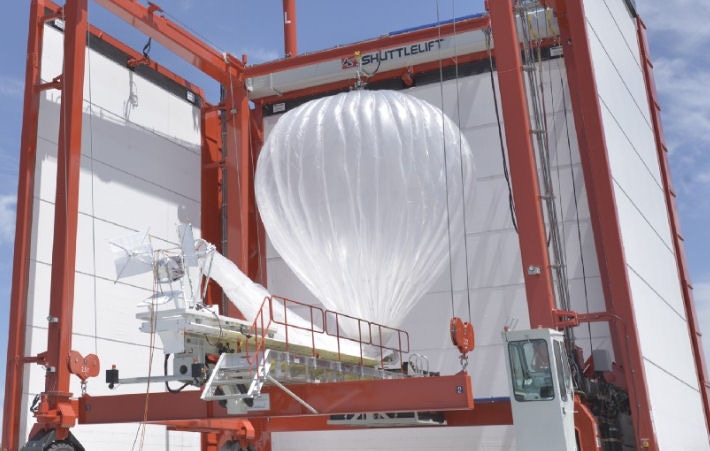Google’s Project Loon has been lifted out of the Mountain View crackpot basement lab to provide much needed connectivity in disaster hit Puerto Rico and the US Virgin Islands.
October 9, 2017

Google’s Project Loon has been lifted out of the Mountain View crackpot basement lab to provide much needed connectivity in disaster hit Puerto Rico and the US Virgin Islands.
In recent years, Google has been almost as well known for its efforts to remove itself from the pigeon hole, as it has for it thriving search advertising business. Not every idea is a good one, but using hot air balloons as a means to provide emergency connectivity is one which has caught the attention of the FCC.
“More than two weeks after Hurricane Maria struck, millions of Puerto Ricans are still without access to much-needed communications services,” said Chairman Pai. “That’s why we need to take innovative approaches to help restore connectivity on the island. Project Loon is one such approach. It could help provide the people of Puerto Rico with access to cellular service to connect with loved ones and access life-saving information.”
As of 6 October, Google has been given permission to use 30 experimental balloons to provide connectivity to Puerto Rico and the US Virgin Islands, which have been ravaged by Hurricanes Irma and Maria, leaving around 90% of the territories without coverage. The objective here will be to ‘support licensed mobile carriers’ restoration of limited communications capability’.
Over the next six months, Google will use the balloons to provide voice and data services through local operators, replacing the various cell towers which were knocked out of action by the high winds. According to the FCC, 81.7% of cell sites are out of service in Puerto Rico, while 57% are down in the US Virgin Islands. 22 out of the 78 counties in Puerto Rico have 100% of their cell sites out of service.
The team has obtained various consent agreements to use land mobile radio (LMR) radio spectrum in the 900 MHz band from existing carriers which operate in the region. Each of the balloons, which can serve an area roughly 5,000 square kilometres, will hover 20 kilometres above the earth, relaying information and connectivity to handsets in the territories.
Project Loon itself was born out of the moonshot X labs of the internet giant, a division which has seen its fair share of ambitious ideas. The teams augmented reality platform Project Tango, as well as the deep learning unit Google Brain are two of the more successful ones which have graduated from the lab, though the Google Glass wasn’t exactly a winner, and neither was the Space Elevator.
With Project Loon however, the team seem to have found an idea which people like. For the moment it is focused on a relief mission, but there will be commercial ambitions in the pipeline somewhere. This is after all one of the most profitable companies on the planet.
The issue here might be a lack of experience though. Google has been working with Telefonica in Peru to test out the idea, though there are few other real-world examples to date. Another issue for the business is a lawsuit which is working its way through the legal system currently.
Space Data Corporation is currently suing the search advertising giant, claiming it stole trade secrets in a meeting back in 2007, when Google was apparently considering an acquisition of Space Data Corporation. Space Data Corporation uses a similar ideas as the basis of its business, to provide connectivity to operations in remote locations, such as oil rigs.
In Puerto Rico, the team is certainly jumping into the deep end, but success here could very realistically create another winner for the Google money-making machine. We can think of a couple of cheap-skate operators who would be more open to the idea of buying a balloon that spending cash in the traditional way…
About the Author(s)
You May Also Like








.png?width=300&auto=webp&quality=80&disable=upscale)


_1.jpg?width=300&auto=webp&quality=80&disable=upscale)


.png?width=800&auto=webp&quality=80&disable=upscale)